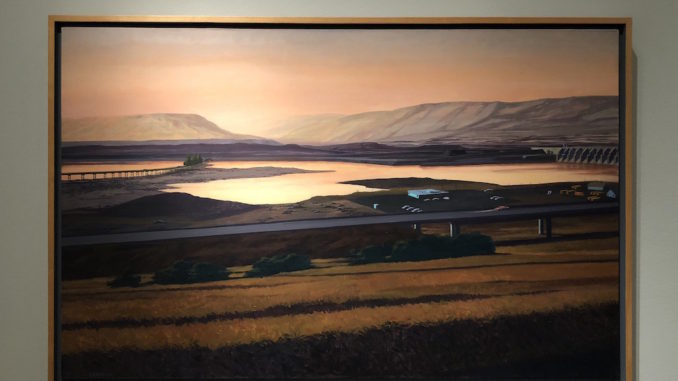
By Tyler Short
As you walk in the new Modern American Realism exhibit at the Portland Art Museum, you will find parts of yourself there, both known and unknown. The Smithsonian’s Sara Roby Foundation Collection presents the Portland community with a rare opportunity to view artworks from some of the 20th century America’s greatest artists. The new exhibit opened on Oct. 20, hosting 44 works diverse in style and theme that are connected to the movement of Modern American Realism.
In the 20th century, visual art entered a period of radical change, giving rise to controversial movements such as Abstract Expressionism. This movement, commonly associated with artists like Jackson Pollock who made large splatter paintings, abandoned representation of the material world. Instead, it focused on interiority through pure freedom of expression, redefining the possibilities of art. By the 1950s, Abstract Expressionism grew increasingly popular, yet its radical ideas did not go unchallenged.
A group of artists, many of whom can be seen at the new exhibit, were appalled by the movement, as it challenged everything they believed art should represent. They referred to their group as “Reality” and created works that became classified under Modern Realism. Their approach to realism was not to merely depict what we can see, but to reach towards the core of human experience.
At the exhibit’s inaugural lecture, Virginia Mecklenburg, the chief curator of the Smithsonian American Art Museum, described what these artists sought to achieve.
“At the most fundamental level, Realist artists essentially turn observation into revelation,” Mecklenburg said. “They create those ‘ah-ha’ moments for us that crystallize our ideas and our feelings.”
Upon entering the intimate exhibit, one of the first paintings that demands attention is Edward Hopper’s “Cape Cod Morning.” Contained by the trappings of a house, we see a woman staring out a window into the morning light. Her anxious yearning for freedom is tangible and makes us wonder who or what is holding her there. Hopper paints pervasively, making us desire the brush of the breeze and the heat of the sun just as urgently as she does.
Closely related to Portland is the painting “Dalles Dam, Evening” by Robert Birmelin. The illusory landscape exalts the dam, 93 miles from Lewis & Clark, as a sight that needs to be seen. It reminds us of sunsets we have seen, the awe we have felt and the impressions we may be unable to articulate. Even attempting to do so would feel wrong. Visually, this landscape captures everything we would want to express — the enveloping comfort of warm beauty. Who would have thought the dam location to be so alluring?
The Modern American Realism exhibit not only evokes associations from our own lives, but emotions from experiences that are not ours. Nevertheless, these emotions encapsulate us, and in that moment of surrender they feel like our experiences all the same.
Mecklenburg commented on what the collection offers to the viewer.
“I think you’ll find that as much time as you have to give to them, you will be well rewarded,” Mecklenburg said. “They will give back to you in equal measure.”
The exhibit will be on display through April 2019 and is a great opportunity to see the works of acclaimed American artists. The Portland Art Museum offers year-long student memberships for $17, making this collection, as well as the rest of the museum, very accessible for the LC student body.
Subscribe to the Mossy Log Newsletter
Stay up to date with the goings-on at Lewis & Clark! Get the top stories or your favorite section delivered to your inbox whenever we release a new issue.

Leave a Reply